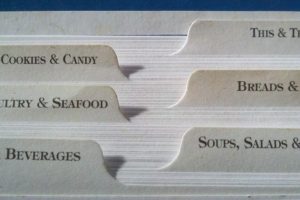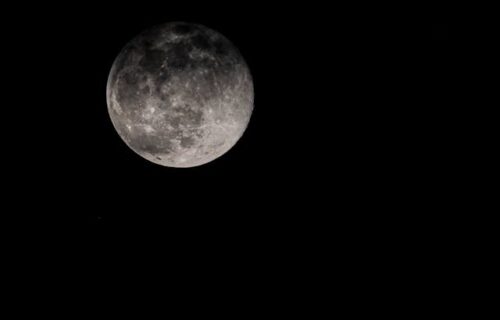
Food porn fast
‘Fess up: did you binge watch the first season of Tidying Up with Marie Kondo on Netflix?
Because yeah, I did. And I read the book in 2015.
I saw an article last month about how thrift shops and charities have seen a huge influx of stuff that no longer sparks joy in the original owners, and they’re attributing this increase to the show, so I’d call that a win for Kondo and the country, not so much for the storage unit companies.
I’m pretty good at taking what I need and leaving what doesn’t feel relevant when I come across a new resource, so while I’ve adopted some of Kondo’s approach—keep only what brings you joy, give gratitude for what you’re getting rid of before sending it on to serve someone else—I’ve stopped short of greeting my house and thanking my clothes (so far).
And I’ve been thinking a lot about decluttering on a different level, actually several different levels.

where else is the clutter?
By the time we get to our 40s, many of us have accumulated a lot of stuff in our homes; for some of us, that increased exponentially as we added spouses and children to the mix.
What else have we accumulated?
Our kitchens acquire ingredients and gadgets that crawl off to live in the back of the pantry, never to be seen until we decide to declutter. (WHAT is THAT?!?)
Our bodies might put on some extra pounds.
Our calendars certainly get more packed.
And the clutter I’m really thinking about is more intangible: the habits, mindsets, and thought patterns that have accumulated, some without our notice.
too much information
We know how to be healthy: it’s not just nutritious secondary foods—it’s also primary foods such as physical activity, nourishing relationships, a nurturing physical environment, meaningful work, sufficient sleep, time in nature, etc.
I hear you laughing, I know: there’s just so much, it feels overwhelming.
What if we were to take a page from Kondo and start with just one category?
And because I come from the culinary world, let’s start with food—my blog, my choice.
I was recently discussing elimination diets with another health coach, and a light bulb went on in my head: perhaps a diet can be a decluttering process for our eating habits, for our thoughts around food as much as about the food itself.
 Most people who come to me for help with their eating are well-informed. They research different diets, they follow various gurus, they know a little (sometimes a lot) about nutrition (not all of it accurate). Many are also passionate about watching cooking shows and following so-called foodies on YouTube, Instagram, Twitter, and Pinterest.
Most people who come to me for help with their eating are well-informed. They research different diets, they follow various gurus, they know a little (sometimes a lot) about nutrition (not all of it accurate). Many are also passionate about watching cooking shows and following so-called foodies on YouTube, Instagram, Twitter, and Pinterest.
And if information were the answer, they wouldn’t need a health coach!
fasting
While I would never recommend a fast to a client (nope, not going there—that’s a whole ‘nother blog post), the other day I found myself telling someone to fast: not from food, but from food porn.
Don’t get me wrong: I enjoy food porn a lot, I post pictures of my own cooking on social media, and I occasionally watch a food show.
And I haven’t lost sight of the fact that food porn is not reality.
I have had many people tell me that they can’t cook, that they’re not comfortable in the kitchen, that they were never taught and they’re afraid they will never learn.
When I ask them to show me the recipes they would like to make (or think they should be able to make) on a weeknight, I’m almost always shocked—or I have to try really hard to keep a straight face.
Yes, if you were single and had all the time (and money) in the world to chase all over town for weird ingredients, spend hours in prep (or had a team of sous chefs and dishwashers), and knew all the food styling tips there are (you really don’t want to know, they’re gross), you just might be able to pull it off.
And, Honey, it’s a week night, you’ve worked all day, the kids are clamoring for dinner, and there’s still sports practice to get through: it’s not going to happen.
Believe me, I’m a professionally trained chef, and it’s not going to happen at my house either.
It amuses/saddens me that a lot of clients come to me expecting to be told that they will need to complicate their food lives (eat this, not that; avoid this at all costs, eat this three times a day) when what I really try to instill in them is how to simplify their food choices and their cooking practices.
There are recipes that belong on the weekends, and there are recipes that are for weeknights.
Guess which ones are found on cooking shows, in glossy food mags, and on most social media platforms? (Mine, of course, are the weeknight ones!)
So just as mindfulness teachers are pushing media fasts on us, I’ve decided to start pushing food porn fasts.
thought patterns that don’t spark joy
I’m hoping that by doing that, we can clear away a few insidious thought patterns about home cooking that have snuck in the kitchen door when we weren’t paying attention. Thoughts such as:
 The food I put on the table should be Instagram-worthy.
The food I put on the table should be Instagram-worthy.- The best place to find recipes is on the internet.
- I must make a meal in which every component is pleasing to everyone.
- If #3 is not possible, I should make more than one meal, so everyone is happy.
- Since #3 and #4 are not possible, we should just get takeout.
Let’s get real: has anyone other you placed these expectations on you?
And if you answer yes, did they do so because you didn’t draw and keep some good boundaries in place?
weeknight food
Want to know what I look for in a weeknight recipe?
- It has fewer than 5 main ingredients (not including herbs and spices), 3–4 of which are from plants, all of which are whole/minimally processed.
- It takes less than 15 minutes of hands-on time (see #3); I have the luxury of working at home a lot, so long (hands-off) cooking times are fine—if you work outside the home, consider a slow cooker or Instapot your friend.
- It can be broken down into steps that can be done ahead of time (such as chopping veggies, making a sauce, mixing dry ingredients together). So going back to #2, your hands-on time might be more than 15 minutes, but not necessarily on the same day.
 It can be multiplied so I can make extra to freeze and serve on nights where it’s just not going to happen.
It can be multiplied so I can make extra to freeze and serve on nights where it’s just not going to happen.- It uses a minimum of bowls, knives, measuring utensils, pots, and pans—because who loves doing dishes?
- It comes from a tried and true source: think Betty Crocker, Joy of Cooking, Fannie Farmer, (please look for the editions from the 50s + 60s)—written by people who know how to write a recipe and have actually tested them, so the temperatures and times are going to be correct.
And here’s a thought: if you really do go on a food porn fast, think of all the time you’ll have that you would have spent on “research”—social media, magazines, and food shows. Perhaps you could prioritize cooking from scratch!
Leave me a comment and let me know, do you think you might need to go on a food porn fast?
Want more on how to flip your kitchen—and your thinking about cooking during the week? Check out my Fl!p Your K!tchen resources.



